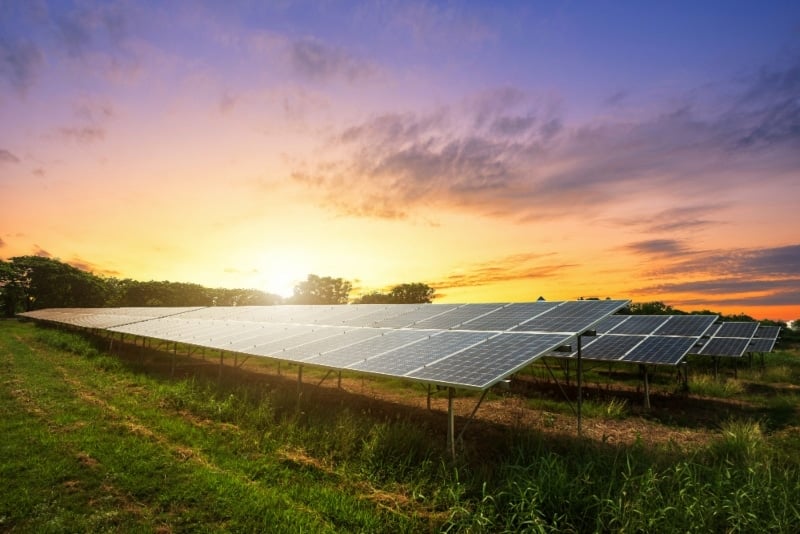
A new solar-powered Bitcoin mining farm has opened in Australia.
It is a 5-megawatt data center operated by Lumos Digital Mining.
Lumos Digital Mining is an Australian company that specializes precisely in mining with renewable energy, so theirs is nothing more than an attempt to expand their operations.
The really curious thing is that the new solar plant was built at the town of Whyalla, a seaport located on the country’s southern coast and known as “the steel city” because of its steel mills.
It is located at the end of a railway line that transports large quantities of iron ore mined inland from Australia to the coast, and it certainly does not have a reputation for being a particularly “green” city.
In recent decades, however, the dominant activity has increasingly been the export of iron ore, and this has given the city a second life and a new economic boom.
The one created by Lumos Digital Mining in Whyalla is the first dedicated solar-powered mining center in South Australia.
Australia: new Bitcoin mining farm powered by solar energy
The private initiative is also getting local authorities interested, to the extent that the local Minister for Trade and Investment, Nick Champion, said the fact that the facility can operate using solar power shows that Bitcoin mining could be environmentally friendly.
He stated:
“This is important for decarbonising blockchain, which is a very energy-intensive industry.
I think it’s the beginning of a new economy out here at Whyalla.”
He also called for more similar facilities to start using renewable energy to mine cryptocurrencies, because while there is demand for blockchain services, there is also demand for zero-emission blockchain services. This is why the South Australian minister believes there will be more and more facilities like this in the future.
According to Lumos Digital Mining, the new mining farm will create 30 jobs once it becomes fully operational, partly because the company has already planned to double the current size of the facility.
Lumos Digital Mining’s Angelo Kondylas says the facility could mine about 100 BTC per year, depending on the availability of power. That is about 16 blocks, as the total reward for those who can mine a block is currently 6.25 BTC, although by spring 2024 that reward will be cut in half due to the halving.
Kondylas also says that the company is willing to potentially sell the generated power to others who would like to use it to mine cryptocurrencies.

Technical information about the Lumos Digital Mining plant
The plant is primarily solar-powered, but Kondylas revealed that during days when the overall electricity production in Australia should be excessive, they can also draw electricity from the grid to mine at low cost.
Indeed, according to Lumos Digital Mining’s representative, power generators in Australia risk having to spend up to $10 million to shut down production facilities on days when the grid draws too little electricity. The Lumos Digital Mining plant could then function as a sponge that absorbs excess electricity that is generated but not used, using it to mine BTC.
The latter is an extremely interesting point about Bitcoin mining.
Electricity production is not easily modulated according to consumption, and unfortunately electricity cannot yet be stored on a large scale in an efficient and economical way.
This means that at times when consumption drops quickly and significantly, some of the electricity is simply wasted, resulting in huge losses for producers.
Bitcoin mining, on the other hand, does not need to keep consumption constant, so it can be modulated to, for example, increase it when there is excess electricity on the grid, and reduce it when that excess runs out.
In this way, power producers can limit losses when they are forced to spend money to produce electricity they cannot sell, greatly improving the economic efficiency of the process.
There are already several similar initiatives around the world, although not yet on a large scale. The Lumos Digital Mining initiative has a couple of advantages in this respect.
The new sustainable bitcoin mining farm in Australia
For one thing, it is an autonomous mining farm that can mine regardless of the availability of grid power. It actually produces with solar power all the electricity it needs to survive. Only if there is excess electricity on the grid can it take it and monetize it by mining BTC, but it has no need to do so.
The second advantage is that it is a completely sustainable mining farm, with no polluting emissions, not even CO2.
So on the one hand it mines in a sustainable way, on the other hand it can also want to help Australian power companies sell any electricity produced in access to a business that uses it to generate income by mining BTC.
Australia is a solar-rich area, where it may not be particularly difficult to replicate initiatives like Lumos Digital Mining. Then again, the amount of renewable energy used globally by Bitcoin mining is growing steadily, which only points to the high road to be taken to minimize the harmful emissions associated with this activity.
It is worth noting that the solar energy used by facilities such as this is not energy that is taken away from the availability of the rest of society, because it is solar energy that would otherwise not be used by anyone. Thus, this is an initiative that does not seem to have any real drawbacks, so much so that it is even desirable for it to be replicated globally in the future, and especially on a large scale.
There are a number of places in the world where there is huge availability of solar energy that is not used by anyone, but from which it is difficult to export locally produced electricity. If this can be combined with grid absorption of excess electricity produced, such a solution not only seems not only expedient at the very least, but also potentially revolutionary, particularly for the health and sustainability of the entire power generation industry.
The post Bitcoin is being mined with the sun in Australia appeared first on The Cryptonomist.




















